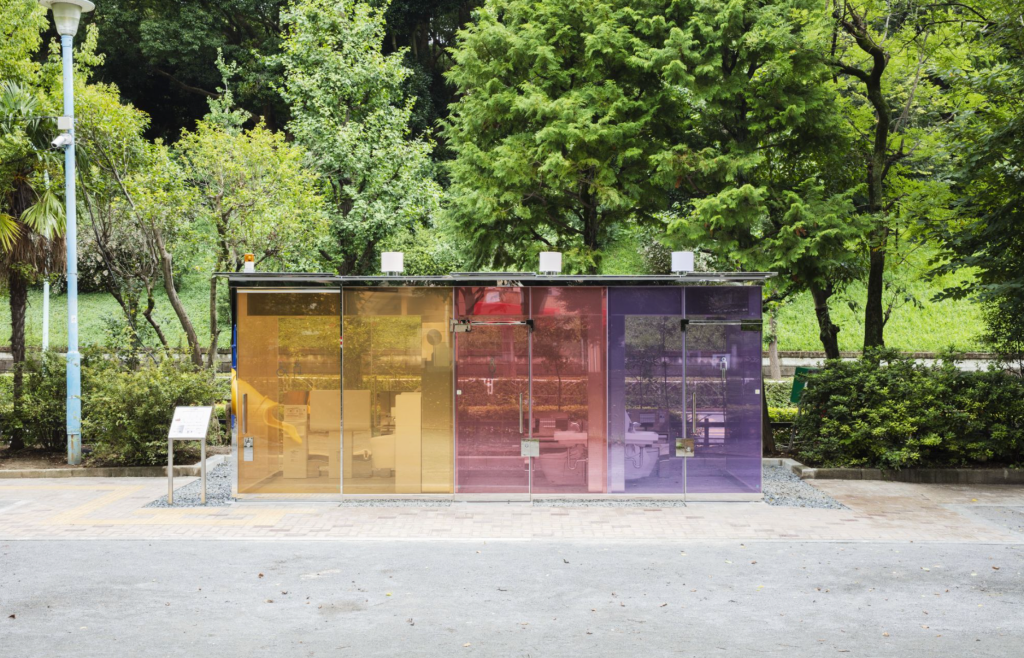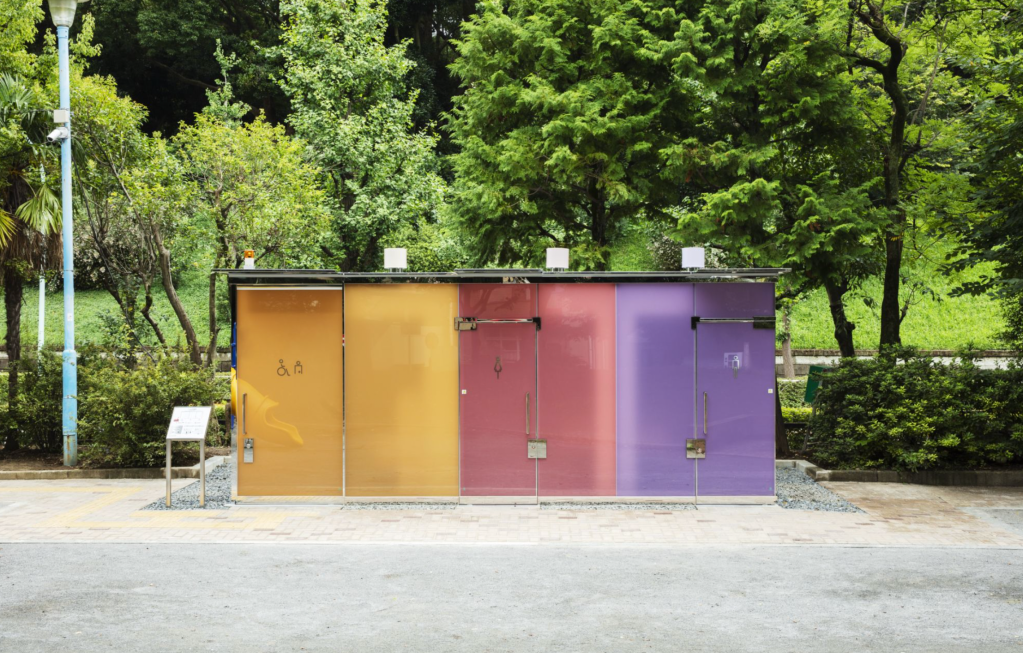
Tokyo, the city of neon dreams and ultra-efficient public transit, has once again flipped the script on urban design. Nestled within the lush embrace of Yoyogi Park, a place where picnickers, dog walkers, and street performers converge, stands a public restroom that’s shaking up the very concept of privacy. Yes, you read that right: a glass-walled toilet. But before you raise an eyebrow, let’s dive into the brilliant mind behind this avant-garde marvel – Shigeru Ban.
Shigeru Ban isn’t just an architect; he’s a disruptor, a visionary who’s made a career out of rethinking the spaces we inhabit. Known for his innovative use of materials and humanitarian projects, Ban’s architectural repertoire includes everything from cardboard cathedrals to disaster-relief shelters. His latest endeavor, the glass-walled toilets in Yoyogi Park, is as much an art installation as it is a public amenity.
Let’s address the obvious: the idea of transparent restrooms seems like a joke or a dare gone too far. But in Ban’s hands, it’s a study in trust and transparency. These toilets, part of the Tokyo Toilet project, are designed with smart glass – a kind of high-tech wizardry that turns the walls opaque when locked. So, while the exterior shouts “look at me,” the interior promises privacy once you’re inside.
The beauty of Ban’s design lies not just in its technological savvy but in its social commentary. Tokyo, like many bustling metropolises, has its share of public restrooms that feel like the last place you’d want to step into. They’re often dark, dirty, and dicey. Ban’s transparent toilets challenge this stigma head-on, presenting a pristine, welcoming, and visually open environment. It’s an invitation to reimagine public spaces as places of beauty and trust, rather than neglect and avoidance.
Stepping into one of these toilets is a surreal experience. From the outside, you see right through – the gleaming fixtures, the spotless floors, the ambient lighting. It’s a public amenity that feels more like a futuristic showroom than a restroom. Once inside, the walls gently blur into opacity, cocooning you in privacy while the world outside is reduced to a soft glow. It’s a moment of serene solitude in the midst of urban chaos.
Ban’s architectural philosophy is deeply humanistic. His work is not just about creating structures, but about fostering connections and addressing needs. The glass-walled toilets are part of a broader initiative to make public restrooms safer and more accessible, especially for women and children. In a city where space is a premium and privacy a rare commodity, Ban’s toilets are a beacon of progressive design.
The response from the public has been a mix of awe and curiosity. Many Tokyoites have taken to social media, sharing their experiences and selfies with the hashtag #SeeThroughRestrooms. There’s a palpable sense of pride and fascination, a testament to Ban’s ability to blend practicality with a touch of whimsy. For tourists, it’s become a must-see (and must-experience) spot, adding a new layer of intrigue to Yoyogi Park’s already eclectic charm.
Of course, not everyone is thrilled. There’s a segment of skeptics who question the durability of the technology and the potential for misuse. But Ban is no stranger to criticism. His career is a testament to pushing boundaries and challenging norms. In his own words, “Architecture is not about building the impossible; it’s about making the impossible accessible.”
The glass-walled toilets of Yoyogi Park are more than just a novelty; they’re a statement. They reflect a city that’s not afraid to innovate, an architect who dares to dream, and a society that’s learning to trust in transparency. As we navigate the complexities of urban living, it’s these bold, unexpected moments of clarity that remind us of the power of design to reshape our world. So next time you find yourself in Tokyo, take a moment to step into Shigeru Ban’s crystal-clear vision. You might just see the city – and yourself – in a whole new light.



